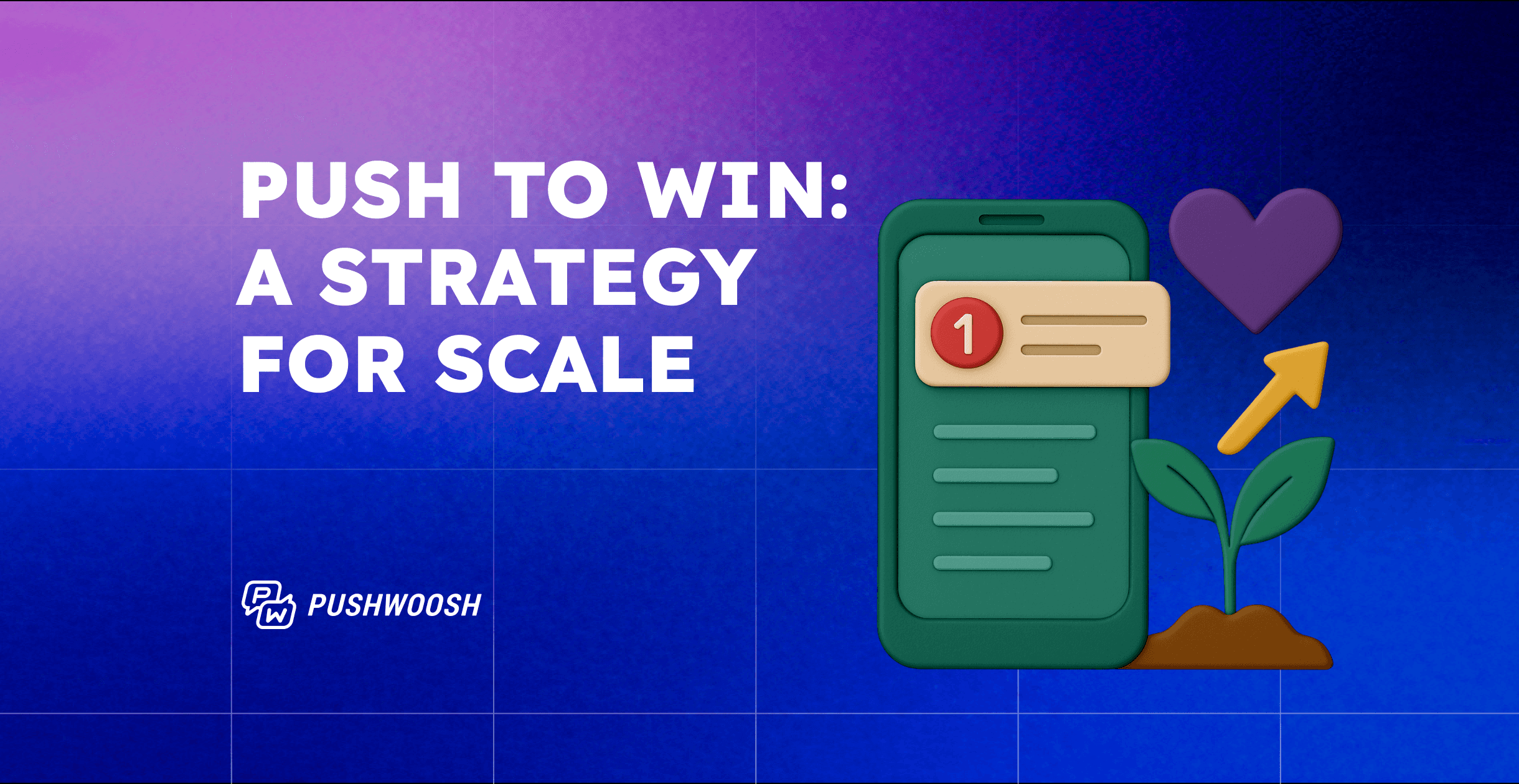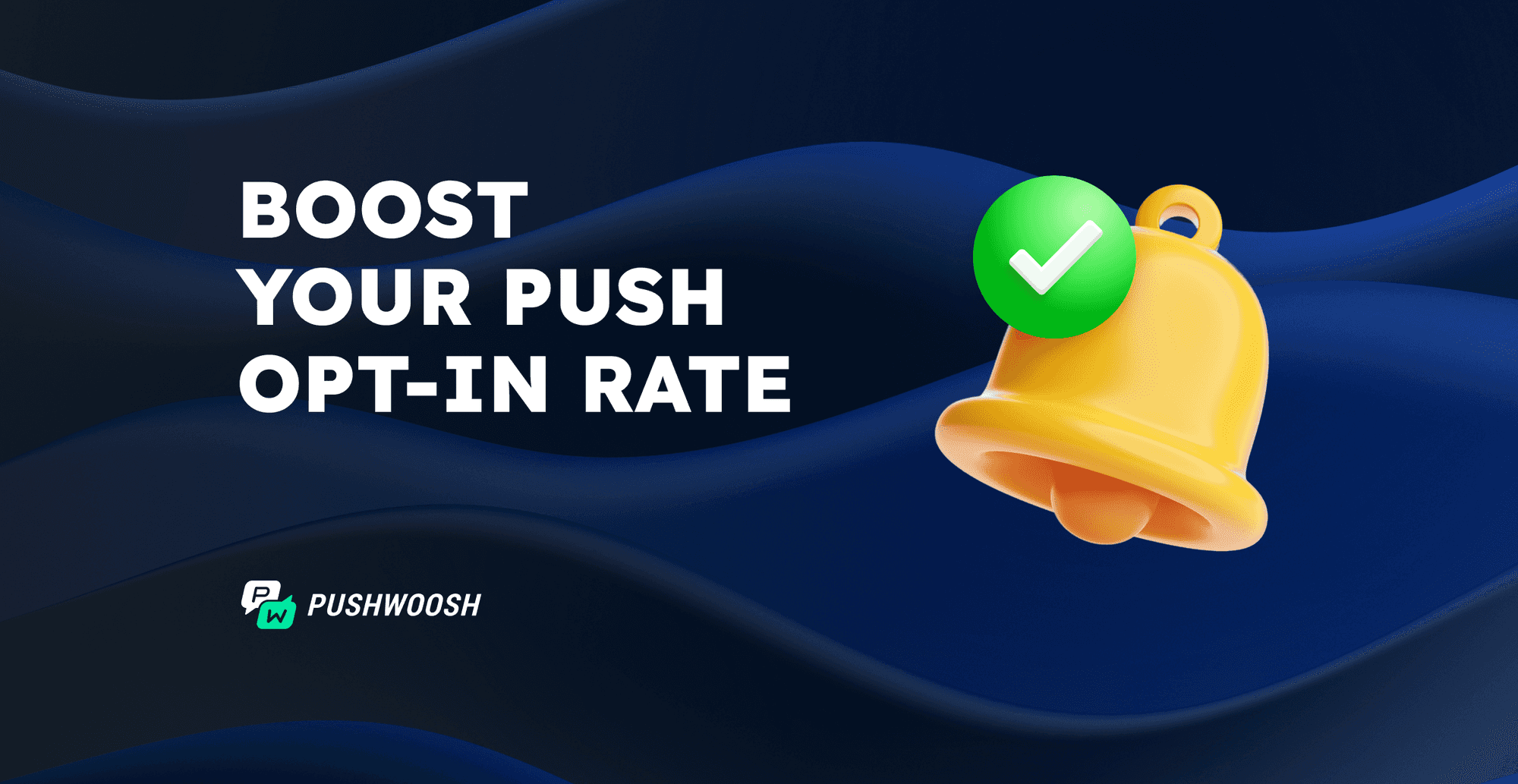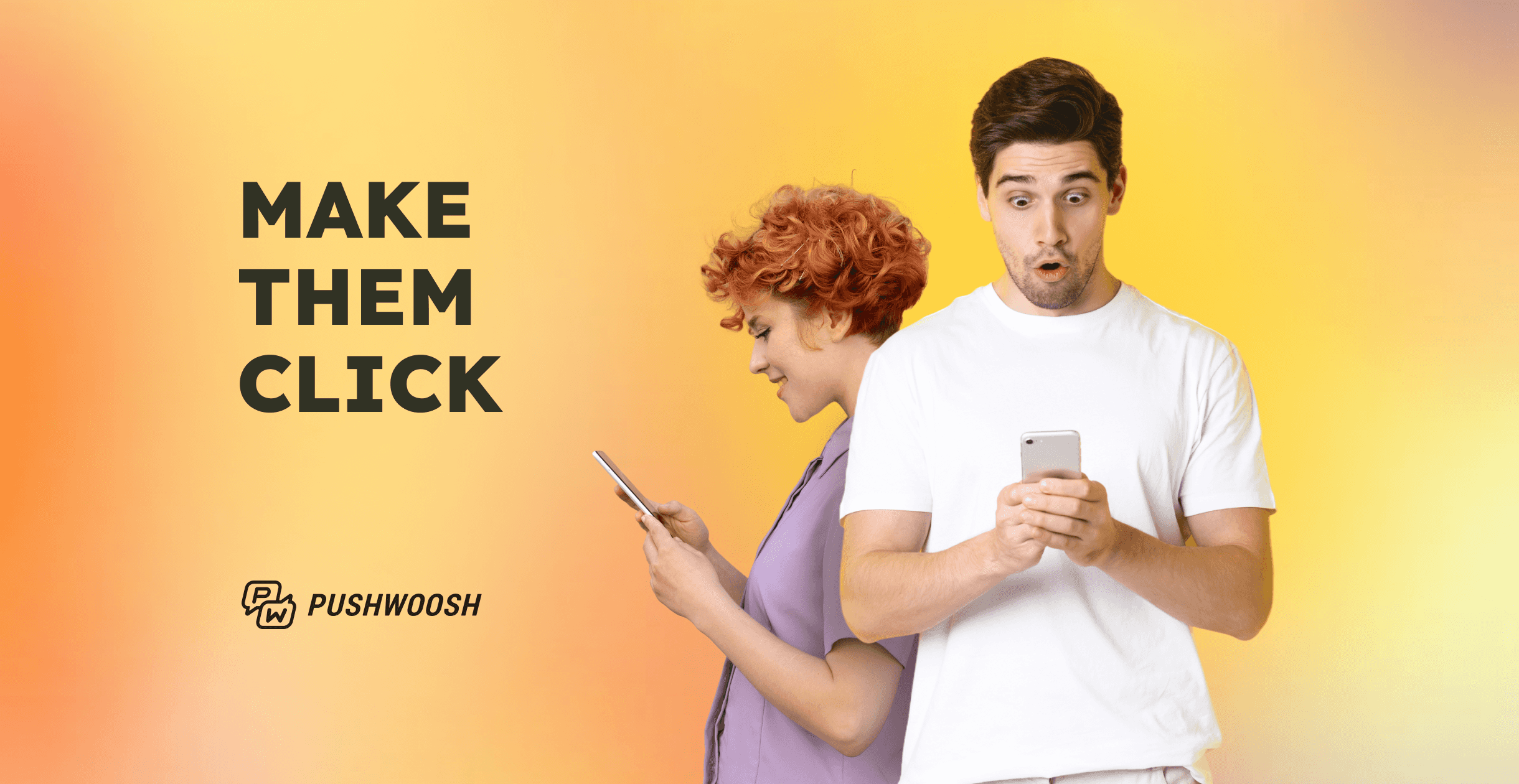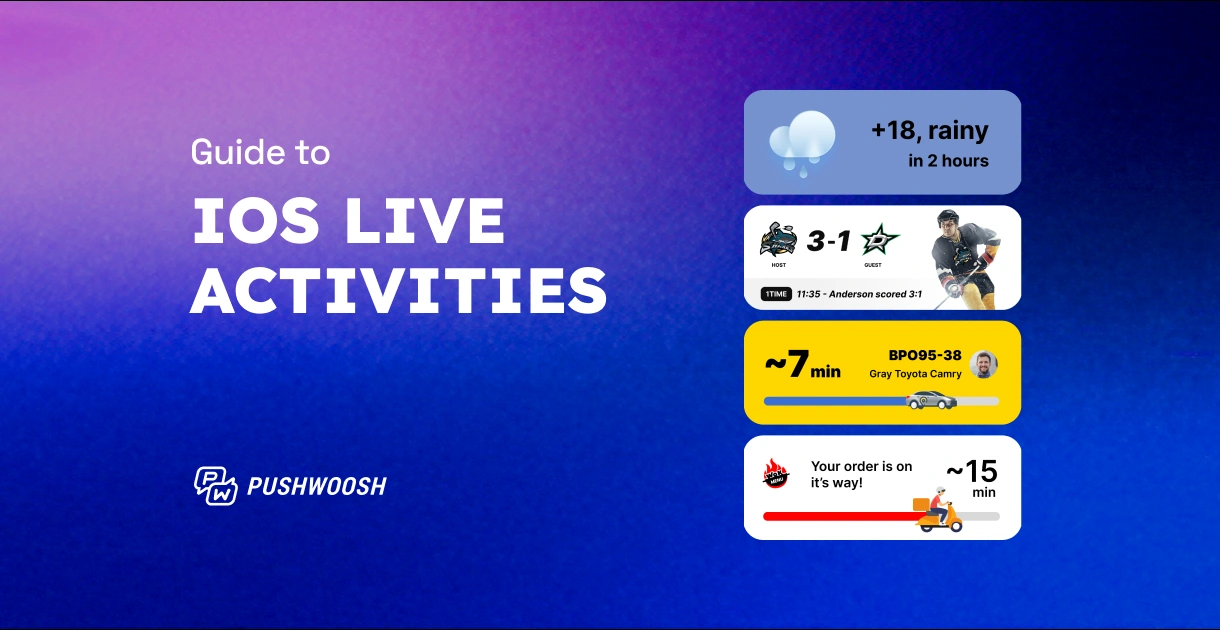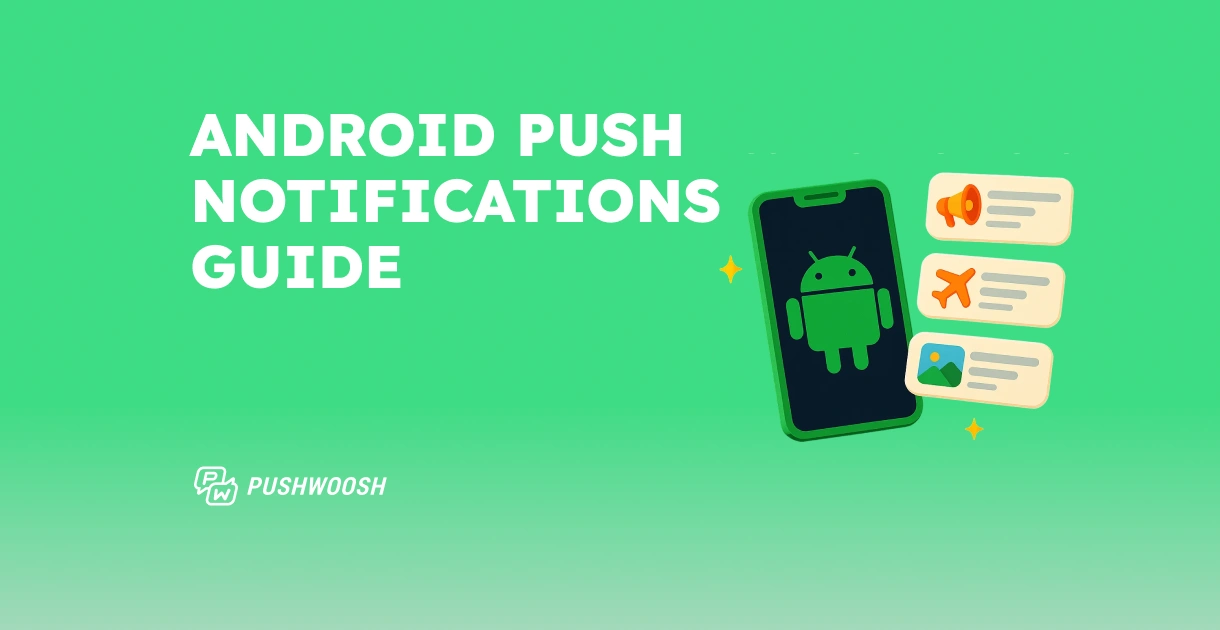Push notification strategy that drives your app revenue at scale
If your app already has thousands or millions of users and you’re still treating push notifications as one-off messages or an afterthought, it’s time to upgrade. At scale, messy push campaigns cost money—in user churn, missed revenue, and wasted effort.
To get better results, you don’t need to send more messages—you need to send highly targeted messages with a clear ROI. This post shows you how to build a push notification strategy that drives tangible business outcomes and scales with your growth.
Why you need a push notification strategy when you’re already sending pushes
Many app teams send push notifications without a clear strategy (=”push” without purpose). While a steady flow of messages might seem like progress, it doesn’t drive revenue unless strategically planned.
A successful push notification strategy is all about delivering:
• The right content;
• To the right user;
• At the right time;
• For the right outcome.
A mature approach moves beyond vanity metrics (like clicks and opens) and focuses on meaningful business KPIs (such as activation, ARPU, and LTV) to make a real impact on revenue.
The shift in mindset looks something like this:
From: “We need to send more messages”
To: “We need to activate 5% more users this week.”
To achieve this, follow a six-step approach to drive revenue through highly targeted messaging at scale:
Using a customer engagement platform can streamline these steps. For example, with the Pushwoosh platform, all the tools you need are integrated, allowing you to launch and scale your push campaigns without the usual bottlenecks.
The end-to-end push workflow that actually scales
1 - Segment
Today, most growth-focused apps already segment beyond basic attributes. But to truly scale monetization, segmentation must go deeper and drive decision-making.
Move beyond demographics and devices—think behavior-first. Group users based on:
• session activity;
• event history;
• intent;
• value-based RFM logic.
Engage “champions” with loyalty rewards. Intervene before “at-risk” users churn. Reconnect with dormant, high-LTV users through tailored offers. Implement event-based marketing to respond to users’ activity in real time.
🟡 Example: An e-commerce app segments users by product category interest and cart abandonment history. High-LTV users who recently browsed premium categories but didn’t convert receive a limited-time discount with a dynamic product recommendation.
Pushwoosh tools: Use Events, and the built-in RFM segmentation grid to filter users by behavior patterns. Apply segment-based entry conditions, real-time event triggers, or segment splitters within Pushwoosh Customer Journey Builder.
2 - Personalize
Personalization is essential to ensure that a message feels relevant, compelling, and timely, driving users through the lifecycle stages of activation, retention, and eventually, monetization.
By leveraging user-specific data, you can craft personalized push notifications that engage users right from their first session and encourage them to take specific actions. Tailor push notification content based on users’ app activity, recent purchases, or browsing history.
You can also localize the message with multi-language support and adjust content based on the user’s time zone, further increasing the sense of personalized engagement.
🟡 Example: A fintech app targets users who have completed a set number of transactions, sending them personalized financial tips through push notifications based on their spending behavior:

Pushwoosh tools: Use Dynamic Content and Liquid Templates to create tailored push notifications with customized elements such as the user’s name, location, or recent activity.
3 - Customize
Customization makes a push notification stand out and capture attention in a crowded inbox. By incorporating rich media elements (images and GIFs) and custom sounds, you can increase the visual impact of your push notifications and drive higher engagement.
🟡 Example: An e-commerce app alerts a user about an exclusive drop, sending a push notification with an eye-catching GIF showcasing limited-release items:
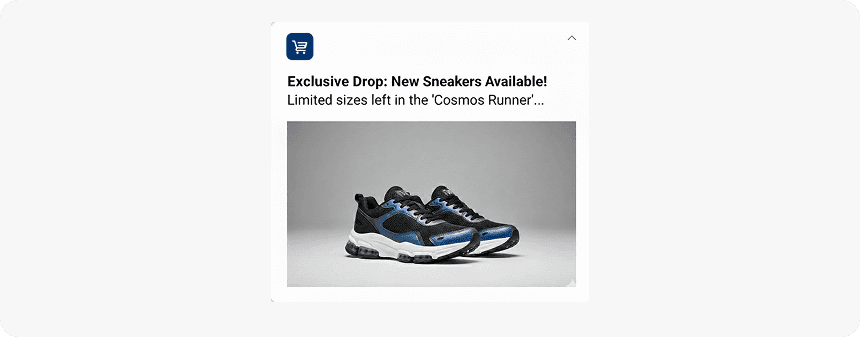
🟡 An even better example: A media app sends an exclusive clip of the user’s favorite show as a push notification:
“Your next episode is ready! Watch a sneak peek of tonight’s news.”
Pushwoosh tools: Leverage Rich Media to enhance the appeal of your push notifications with visuals and sounds that grab attention. For app-exclusive content or new feature announcements, integrate Custom Data to highlight the most relevant offers or features for each user segment.
4 - Automate
Automating push notification campaigns lets you deliver relevant messages at the most appropriate times, without having to manually schedule each send. By using behavioral triggers and/or scheduling, you can make sure users receive your push notifications when they’re most likely to engage.
🟡 Example: A fintech app schedules weekly account summaries every Sunday evening when users are most likely to review their spending and budgets for the week ahead.
Pushwoosh tools: Let the Best time to send algorithm pick the most receptive moments for your push notifications for each user. And if push notifications are disabled, get your message delivered via other channels.
5 - Deliver
If users don’t receive your messages, there’s no opportunity to engage or drive them to the next step in their journey.
By ensuring your messages reach your audience promptly, you create opportunities for users to take action—whether activating a new account, returning to the app, or making a purchase. This reliability also builds trust, crucial for long-term retention and increasing lifetime value.
Pushwoosh tools: High-Speed Delivery Technology and 99.9% uptime guarantee your push notifications are delivered reliably and on time, ensuring you don’t miss a chance to activate, retain, and monetize users.
6 - Analyze & Optimize
By continually monitoring key metrics such as push notification sends, opens, CTRs (click-through-rates), and conversions, you can assess the effectiveness of your campaigns and make data-driven decisions. Analyzing trends over time will also help you understand what’s working and where you need to optimize.
🟡 Example: A fintech app tracks its push notification CTR over time and realizes that reminders about low balances perform better when they include a direct link to the user’s spending report. They optimize future push notifications to include this link, boosting conversion rates.
Check whether your customer engagement platform lets you measure:
• Drop-offs—and take action in real time;
• Increased ARPU from a campaign;
• Retention uplift post-onboarding;
• Conversion rate from abandoned cart series;
• Revenue per user per push sent;
• Current performance compared to historical data over the months.
Pushwoosh tools: You can use Pushwoosh Analytics to track and analyze push notification performance. Compare current campaigns with past performance to identify areas for improvement and refine your strategy for ongoing success.
More strategic tips for growth-focused apps
Segment once, use everywhere
Growth-focused app teams know the power of segmentation—but too often, segments live in silos: one setup for push, another for email, yet another for SMS. That fragmentation creates inconsistencies and drains time and resources.
The smarter approach? Build your audience segments once and activate them across all channels—push, in-app, email, and SMS—without duplicating your logic. It’s not just a time-saver; it ensures your messaging remains consistent and aligned across the user journey.
This kind of orchestration is especially critical for lean teams aiming to scale fast. Marketers can design flows visually without code, while developers can set up precise, automated triggers via API to keep campaigns and data in perfect sync.
📌 With Pushwoosh, this approach is built in. Define your segments using Tags, Events, or RFM logic, and reuse them across every communication channel—all within one unified platform.
Cost-aware messaging: Push as a smart alternative
Not all channels are created equal, especially when you’re watching your acquisition and retention budgets. SMS and re-engagement ads may get attention, but their cost per message can add up fast. Push notifications, on the other hand, offer a direct, cost-effective route to your audience, with no per-message fees and a higher engagement ceiling when used right.
A thoughtful push strategy can reduce dependence on expensive channels while still reaching users at high-intent moments. And when combined with smart fallback logic—say, triggering an email if a user has disabled push—you maintain message delivery without overspending.
This makes push notifications a particularly powerful tool in verticals with high competition and low margins, such as food delivery and e-commerce.
📌 Pushwoosh supports multichannel fallback and smart delivery timing out of the box. You can configure automated scenarios where push is prioritized, and SMS or email serves as a backup, ensuring every message reaches the user while keeping costs under control.
Your action plan: Audit your strategy today
Is your push notification strategy powerful enough to fuel growth? Use this quick self-assessment checklist to evaluate where you stand:
✅ I know what outcomes each push is meant to drive
✅ I segment based on user behavior or value
✅ I use automation to trigger based on real-time user actions
✅ I personalize content to user preferences
✅ I test, measure, and optimize campaigns regularly
✅ I coordinate push with other channels (email, in-app, SMS, WhatsApp)
If you didn’t say “yes” to all, you’ve got room to grow. Book a free call with our team and start building a smarter, revenue-driving communication strategy today.

